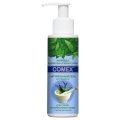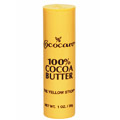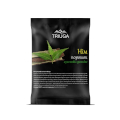 You probably know that you should choose skincare products depending on the peculiar characteristics and needs of your skin, but do you know how to determine your skin type and assess the condition of your skin? Here is a 6-step checklist that will help you to understand what exactly your skin needs.
You probably know that you should choose skincare products depending on the peculiar characteristics and needs of your skin, but do you know how to determine your skin type and assess the condition of your skin? Here is a 6-step checklist that will help you to understand what exactly your skin needs.
First, let’s figure out the difference between skin type and condition. Skin type is determined genetically and does not change throughout your life. It depends on the structure of the skin and the activity of its sebaceous glands.
It is generally thought that there are four main skin types. They differ from one another by the amount of sebum produced by the skin. Sebum (skin oil) is a greasy substance that lubricates the skin and helps to protect it from dehydration and the environment.
Normal skin produces just enough sebum to remain healthy and protected; it is also referred to as well-balanced skin. Dry skin produces less sebum that it needs to retain moisture and maintain its protective hydro-lipid barrier. Oily skin produces too much sebum, which can result in a glossy shine and clogged pores. Finally, combination skin produces more sebum in the T-zone (forehead, nose and chin) and less sebum in the cheeks.
Unlike your skin type, the condition of your skin can change multiple times during your life. It is characterised not only by the level of sebum secretion, but also by the skin’s firmness and elasticity, its sensitivity to external irritants, the characteristics of blood circulation in the skin, and moisture content.
To find out your skin type and assess the condition of your skin, you can do a few simple and quick tests at home. Start with assessing the activity of the sebaceous glands to determine your skin type if you don’t know it yet.
Wash your face thoroughly and don’t use any skincare products afterwards. Wait for about 30–60 minutes, then gently blot your face with a thin paper tissue and look at the result. Visible greasy spots all over the tissue indicate oily skin. If the spots are concentrated in the T-zone, you have combination skin. A small amount of slightly visible greasy spots indicates normal skin. If there are no traces of skin oil on the tissue, you have dry skin.
Now let’s test the elasticity of your skin. Stand in front of a mirror, pinch your cheek with the thumb and forefinger, then release the skin. If the wrinkle caused by pinching completely disappears in less than a second, your skin is sufficiently elastic. If it takes more time for the wrinkle to disappear, your skin lacks elasticity.
Next, let’s determine if your skin is hydrated enough (keep in mind that oily skin can be dehydrated, too). You can do this at home by taking a close look at your skin and analysing how it feels. Flaking, enlarged pores, a feeling of tightness, and a dry glossy sheen on the skin are the signs of dehydration. If your skin is firm, does not flake, and pores are no more visible than usual, it gets enough moisture.
Let’s also evaluate the sensitivity of your skin, i.e. how strongly it reacts to various external irritants. Run a wooden cuticle stick over your skin, applying a little pressure, and see what happens. If your skin has normal sensitivity, a pink stripe will appear on it in 5–15 seconds. It should disappear quickly. If you have a capillary spasm, the stripe will be white. If your skin is overly sensitive and prone to various reactions, the stripe will bright red and won’t disappear for quite a lot of time.
The next step is to check the condition of the skin capillaries. Normally, the capillaries in the skin are quite elastic, and even when they dilate due to various external factors, resulting in skin redness, it doesn’t take the skin very long to return to its natural colour. If the capillaries are less elastic than they should be, they stay dilated for long, which can result in skin redness or even the development of a skin condition named rosacea.
Finally, let’s assess skin pigmentation. Normally, the skin should be coloured fairly evenly, and its natural colour shouldn’t change much during your life. Uneven pigmentation affects most people at some point; it may be caused by sun exposure (tanning), certain disorders, or ageing. For example, the so-called liver spots are associated with ageing and exposure to UV radiation.
With the help of these simple home tests, you can assess the condition of your skin and figure out what your skincare routine should be. If you think that there is a reason to suspect dermatological problems, you should consult a doctor who will conduct a more thorough examination and prescribe treatment if your suspicions turn out to be correct.
If there are no visible problems, all you need to do is choose skincare products appropriate for your skin type and age that will help to keep your skin looking healthy and well-groomed. Look for products formulated with natural moisturising, nourishing and protective ingredients, ingredients that boost skin firmness and elasticity, and regenerative agents. Try to avoid cheap synthetic ingredients that may result in skin irritation, flaking, itching, inflammation, etc.
Natural Skincare Products in Our Store
Comex Natural Facial Cleansing Gel for Dry and Normal Skin, 150 ml |
Cococare 100% Cocoa Butter Stick, 28 g |
Triuga Neem Powder, 50 g |
Triuga STOP Pigmentation Ubtan, 90 g |
